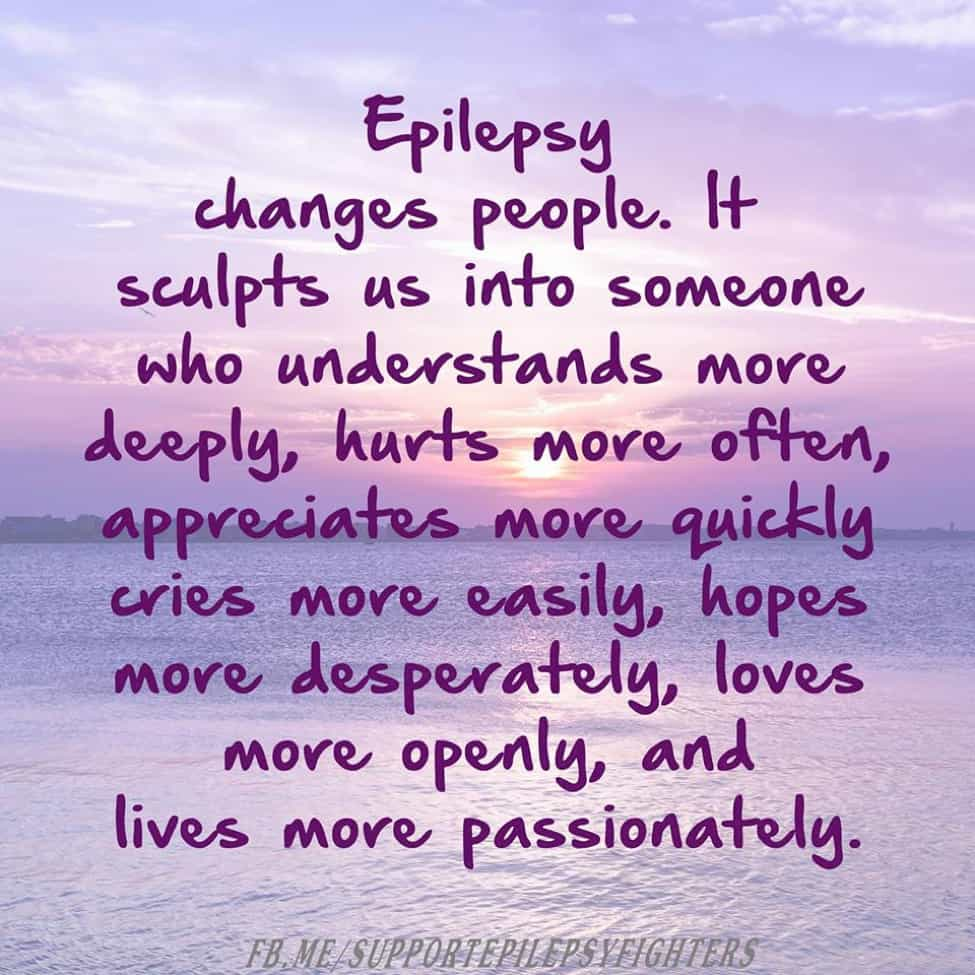
What Is It Like To Have Epilepsy?
By Tom McGranahan, Jr.
What is a seizure?
A seizure is sudden abnormal electrical impulses in a group of cells within the brain and is defined as local or generalized. There are six (6) types of defined generalized seizures that include Grand Mal, Myoclonic, Absence, Atonic, Tonic, and Clonic. A person having a seizure may convulse, collapse, have muscle spasms, loss of consciousness, or may display other types of short-lasting disturbances in the brain and/or levels of consciousness. Symptoms vary from individual-to-individual and based upon the source location of the seizure in the brain. When seizures occur more than once or over an extended time period, this may indicate epilepsy.
Life with epilepsy
That scientific explanation well defines the physical attributes but paradoxically the having of epilepsy has a whole lot more of an impact on daily life; unemployment (try living without making any income), social interactions and personal self-esteem… It is like being “trapped in a cage” that is then placed in an empty warehouse.
Most all of one’s various amount of simple daily activities are obliterated. Our bodies actions/functions are being severely impacted by the “iron chained ball” of epilepsy attached to both feet.
Epilepsy and employment
So what does one do about it? How does one adapt to its high cost and live in an intense ever-changing sleep schedule, medicine taking schedule, and weekly, monthly or biweekly Doctor Appointments? What’s it like to not even getting a chance to interact with anybody? Even if you are a fantastic people person!
Yes, 80% of those of us in America who have epilepsy have seizure control. Satirically though, their getting of a job can only be done by not speaking of their epilepsy. Yet, paradoxically, after an employer reviews a bleak job history on ones resume, how can they but not think the person lacks any type of “talent”?
Ironically, our disorder of epilepsy isn’t visible unless we are seen having a seizure – showing our bodies “out of our control”. So our bodies look as normal as everyone’s. But, ones having of epilepsy is a 24 hour disorder.
Staying positive
The onslaught of seizures is quite humbling. The one thing that makes the handling of epilepsy so difficult is not knowing when the next seizure will occur. A “dark cloud” is hovering overhead at all times.
I’ve found out firsthand the best way to overcome the bleakness of having epilepsy is by consistently keeping a positive attitude – one day at a time – which builds and strengthens ones resolve by enabling us to calmly and confidently endure those nonstop bombardments of frustrations.
Medication
One big help is medication. Dilantin is one of the oldest and best studied anti-seizure medications on the market – though first developed in 1908, it wasn’t until 1938 the drug’s ability to prevent epilepsy was discovered! (It works in part by stabilizing nerve cells and making them less excitable). Today’s medical care is so very advanced compared to our parent’s generation and those before them (who had no medicines/medical care available)!
Listed below are a variety of medications, many of which fall into two types of seizure drugs: narrow-spectrum AEDs and broad-spectrum AEDs. Some people may need to take more than one medication to prevent seizures. Consult your doctor to find out what is right for you.
Generic names with brand names
- Acetazolamide
- Brivaracetam available as Briviact
- Carbamazepine also available as Carbagen, Tegretol, Tegretol Prolonged Release
- Clobazam also available as Frisium, Perizam, Tapclob, Zacco
- Clonazepam
- Eslicarbazepine acetate available as Zebinix
- Ethosuximide
- Everolimus also available as Votubia
- Gabapentin also available as Neurontin
- Lacosamide available as Vimpat
- Lamotrigine also available as Lamitcal
- Levetiracetam also available as Desitrend, Keppra
- Oxcarbazepine also available asTrileptal
- Perampanel available as Fycompa
- Phenobarbital
- Phenytoin also available as Epanutin, Phenytoin Sodium Flynn
- Piracetamavailable as Nootropil
- Pregabalinalso available as Alzain, Axalid, Lecaent, Lyrica, Rewisca
- Primidone
- Rufinamideavailable as Inovelon
- Sodium valproate also available as Epilim, Epilim Chrono,Epilim Chronosphere, Episenta, Epival
- Stiripentolalso available as Diacomit
- Tiagabineavailable as Gabitril
- Topiramate also available as Topamax
- Valproic acid available as Convulex, Epilim Chrono, Epilim Chronosphere
- Vigabatrinavailable as Sabril
- Zonisamidealso available as Zonegran
Source: EpilepsySociety.org.uk
Below is one of the positive benefits of reading up on others thoughts regarding living with epilepsy:

So, let’s all always Stay Positive!
Tom McGranahan Jr. was born in Richmond Va., the second oldest in a family of eight. Lives with wife Angela and 2 daughters, Mariah and Arielle. He has a Bachelor of Science in Business Administration. He was a member of Virginia State Board for People with Disabilities 6/95-6/99, and speaker at Department of Education’s 3rd National Employment Conference 9/11/00. Exercises every other day at a gym and operates a residential painting business. He steadily perseveres to life’s challenges – like writing this article – even after 50% of the language section of his brain was removed in his 4th brain operation.
Visit his website: http://www.epilepsyintheopen.com/




